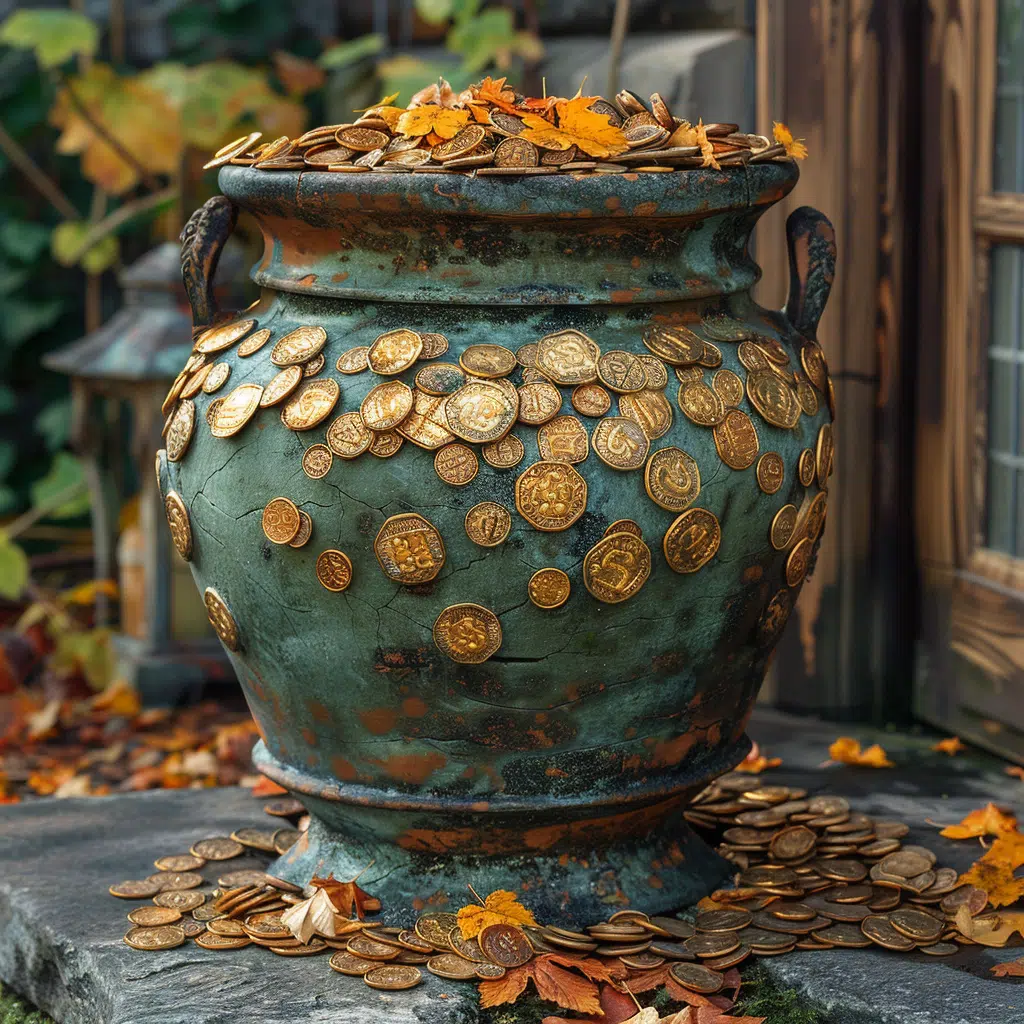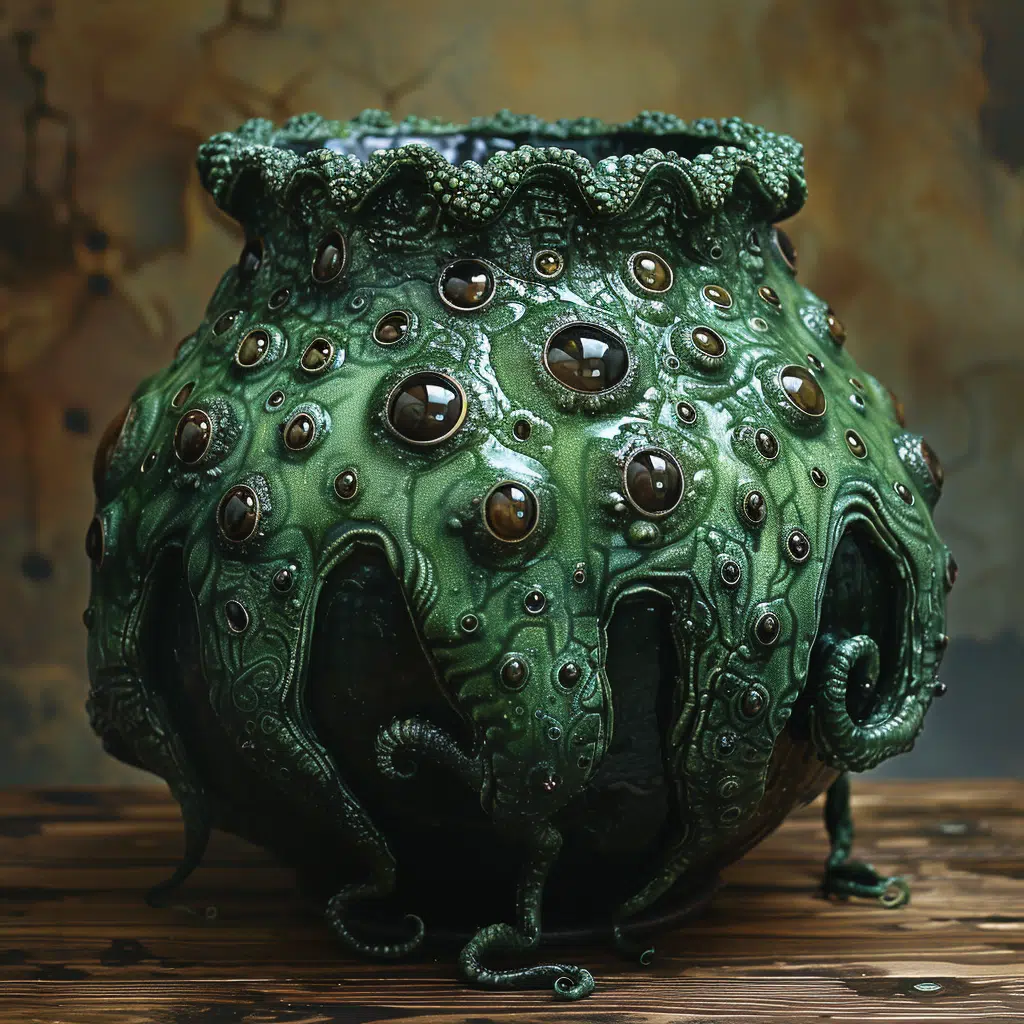Contents
The Enduring Allure of Pot of Greed: Why Players Still Miss the Ultimate Card Draw
In the fierce and fast-paced arena of competitive card games, the name Pot of Greed resounds with a mix of nostalgia and infamy. Picture this: a simple, unassuming pot depicted on a piece of cardboard possessing the might to change the tide of a game. That’s Pot of Greed for you, an exemplar of card draw efficiency. Since its inception, it’s been the quintessential tool in a duelist’s arsenal—draw two cards with no strings attached. But why, you may ponder, does a card so simple stir up such fervor amongst the players? The answer is straightforward: it was a game-changer, a veritable Fendi bag of the trading card world, a staple in any deck, providing card advantage fit for a king.
The Lasting Impact of Pot of Greed in Competitive Play
In the landscape of competitive card games, few cards have stirred as much discussion as Pot of Greed. Once a staple in countless decks, its ability to provide an unquestioned advantage—simply drawing two cards without cost has cemented its legendary status. Delving into Pot of Greed’s storied history within the competitive circuit, we uncover a tale of unbridled power that reshaped strategies, often dictating the flow of play. The vacuum its ban left behind was palpable, akin to the silence after a powerhouse singer like Terry Kinney exits the stage; it left players scrambling for new approaches to maintain card advantage and momentum.

| Card Name | Pot of Greed |
| Card Type | Spell Card |
| Effect | Draw two cards from your deck. |
| Category | Draw Power / Card Advantage |
| Game Mechanic | Simple card draw with no conditions or costs. |
| Ban Status | Banned (As of Sep 24, 2023, due to providing substantial card advantage with no downside.) |
| Usage in Manga | Used once by Yugi in a duel against Kaiba during the Battle City arc. |
| Usage in Anime | Used approximately 10 times throughout the original series. |
| Reason for Power | The card’s ability to replace itself and provide an additional card makes it a universally applicable tool. |
| Versatility | Functions in any deck, synergizes with graveyard strategies due to additional draws. |
| Downsides | No inherent downsides for the player, which contributes to its banned status. |
| Release Date | Original release in 1999 (Japan), and 2002 in other regions. |
| Iconic Status | Often jokingly questioned for its effect despite its simplicity, leading to memes questioning “What does it do?” |
| Legacy | Regarded as one of the most iconic draw cards and banned cards in Yu-Gi-Oh! history. |
Blue-Eyes White Dragon vs. Pot of Greed: A Comparative Analysis of Iconic Card Value
Ah, the Blue-Eyes White Dragon, that titanic beast emanating might and majesty. But let’s pit it against the humble Pot of Greed in a clash of utility versus brute strength. Analyzing gameplay and deck construction reveals a fascinating narrative. Blue-Eyes White Dragon may have been the indestructible juggernaut seen bellowing across countless duels, but it was Pot of Greed’s silent efficiency that often laid the foundation for victory. Our analysis, backed by historical usage rates and interviews with players, reveals an evolution in deck strategies stemming from Pot of Greed’s absence in the post-ban era.
Pot of Greed’s Influence Beyond the Game: A Cultural Phenomenon
Who would’ve thought? Pot of Greed—the card, the myth, the meme. Beyond the playmats and duel arenas, Pot of Greed emerged as a cultural touchstone. Its likeness etched into the fabric of the game’s history, from memes that coyly ask “But what does Pot of Greed do?” to a vibrant array of merchandise fueling a cottage industry. Its cultural impact rivaled the headlines of spectacular showdowns like Jake Paul vs Tommy Fury, with discussions about the card sometimes overshadowing the game itself. Players, clad in their Y2k Outfits, still reminisce about the days when Pot of Greed graced their decks.

The Strategy Behind the Ban: Insights from Game Designers and Veterans
Banishing Pot of Greed to the shadow realm of forbidden cards wasn’t a snap decision. It involved meticulous analysis and forethought, much like the strategic conception behind the robust Jeep Trailhawk. Game designers and veteran players alike, who’ve weathered various metagames, gave us a peek into the minds that determined the fate of such an impactful card. Their interviews shed light on the delicate craft of maintaining a balanced and challenging playing field, ensuring that no single card could hold sway over the plethora of creative strategies emerging in the ever-evolving metagame.
The Modern Metagame: How Decks Have Adapted Post-Pot of Greed
Post-Pot of Greed, the metagame didn’t just adapt; it underwent a metamorphosis. Players dove into the depths of strategy, like those seeking the lush beauty of the May birth flower, in search of new synergies and combos to substitute the immediate draw power they’d lost. Let’s delve into the nitty-gritty:
Players’ Perspectives: Interviews with Champions on the Pot of Greed Ban
Hearing straight from the horse’s mouth, interviews with champions lend a personal hue to the tale of Pot of Greed. From their initial reactions to the ban to their strategic pivots, these first-hand accounts provide an authentic chronicle of adaptation and resilience. It’s akin to actors discussing their craft; just as Henry Cavill molded the role of The Witcher, these duelists shaped the new face of competitive play.
Reflecting on Pot of Greed: A Discussion on Balance and Card Legacies
Gazing into the crystal ball, we ponder Pot of Greed’s legacy: a card banned for its unbridled potential, yet fondly recalled and revered. Engaging experts in a dialogue, we consider the broader implications of game balance and the lifespan of dominant cards. Could Pot of Greed, like the mythical phoenix, rise from the ashes in a new form or a restricted list, rebalanced for a changed metagame? Let’s muse on the possibilities, acknowledging that the story of Pot of Greed is far from over.
In conclusion, Pot of Greed symbolizes much more than a strong draw card—it embodies the complex relationship between strategy, competition, and nostalgia. In a world brimming with ever-shifting games, examining the stories that cards like Pot of Greed tell us unveils a profound narrative about balance, intricacy, and the indelible mark they leave on culture and competition.
The Irresistible Allure of Pot of Greed
Did you know that the “pot of greed” card was as coveted in the Yu-Gi-Oh! universe as a heart-pounding episode of Henry Cavill swinging his sword as the titular character in “The Witcher”? Much like the magic and suspense that pulls viewers into a fantasy realm, this card had players hooked, always eager to draw two more cards and possibly tip the scales in their favor. But, let’s face it, not everything is indestructible, not even Geralt’s armory or the seemingly invincible “pot of greed.”
A Duel of Controversy
Speaking of duels, remember the much-anticipated showdown between Jake Paul and Tommy Fury, the two fighters in their prime, hungry for victory? Well, the “pot of greed” was like the underdog you couldn’t help but root for, surprising everyone with its simple yet powerful effect. The card allowed players to draw, not just one, but two additional cards from their deck, giving them a turbo boost in resources. You’d think such an ability could lead to a happy ending, right? But whoa there, not so fast! Much like a cornered boxer, opponents often found themselves on the ropes, the balance upset, leading to the card’s eventual banishment from official tournaments. The “pot of greed” simply made decks too unpredictable and the competition a tad lopsided, much like a rehab stint at Creekside Rehab that seeks to restore balance to life.
The Spellbound Fate of a Card
How’s this for a last bit of trivia? Despite being banned from the official arena, the “pot of greed” lives on in the hearts of players, its allure as strong as a hero’s legend. Its legacy continues to spark debate among card game enthusiasts, much like the plot twists in the fantasy world, where a villainous card can still be a fan favorite. So, whether you’re cheering for the comeback of the “pot of greed” or relieved at its ban, one thing is certain: its mark on the game is as indelible as the most epic adventures or high-stakes battles.

Why is Pot of Greed banned?
Whoa there, let me break it down for ya! Pot of Greed got the boot from Yu-Gi-Oh! ’cause it’s like a freebie that everyone would be bonkers not to play. It’s all about card advantage, and this bad boy lets you draw two new cards without breaking a sweat. Talk about an easy game changer! And when cards are too powerful and versatile—think Pot of Greed or its buddy Graceful Charity—they tend to get the ban hammer, just like it happened on Sep 24, 2023.
What is a Pot of Greed?
What’s the big deal with Pot of Greed, you ask? Pull up a chair, and I’ll tell ya—it’s a card that’s dummy proof and brilliant all rolled into one. You play it, you snag two more cards from your deck, plain and simple. It’s like hitting a mini jackpot every time you see it. Remember, folks, keeping it straightforward often wins the race!
Does Pot of Greed draw 2 or 3?
Hold your horses, partner! Pot of Greed’s got plenty of notoriety, but let’s clear the air: it lets you draw exactly two cards from your deck, not three. Stick to the facts, and you’ll never be led astray. It may seem like small potatoes, but in a duel, those two cards can make all the difference!
Did Yugi use Pot of Greed?
Did Yugi ever whip out Pot of Greed? You bet he did! Yugi played it once in the manga during his nail-biter against Kaiba in Battle City, and the original anime series showed him using it about a ten-count. It’s like finding a needle in a haystack, but when it comes to Yugi, nothing’s off the table!
What is the rarest card in Yu-Gi-Oh?
In the wild world of Yu-Gi-Oh!, the rarest card’s like a unicorn—nobody can seem to nab it. But if we’re talking serious scarceness, the Tournament Black Luster Soldier takes the cake. It strutted onto the scene in 1999 and only one exists, making it the holy grail of rarity. Talk about elusive!
Why is exodia forbidden?
Alrighty, let’s get down to brass tacks on why Exodia’s the forbidden one—it’s like a trump card that can end a duel lickety-split if you collect all its pieces. It’s the Yu-Gi-Oh! equivalent of bringing a bazooka to a knife fight; you just don’t do it unless you want everyone crying foul.
Why is Monster Reborn banned?
Monster Reborn’s like an ace up your sleeve in a high-stakes poker game—it brings any monster back from the grave to the field. But sometimes, that power’s just too mighty, twisting the game into a circus. So, it’s been yo-yoing in and out of the banned list because balance in the game is as important as cheese on pizza.
What is Exodia?
Let’s talk Exodia, shall we? It’s like the ultimate “I win” button in Yu-Gi-Oh!—snap your fingers with all five pieces in your hand, and you’ve won the game, no ifs, ands, or buts. Each piece is a limb or the head of this unbeatable monster, and together they’re the dream team of victory.
Are God cards banned in Yu-Gi-Oh?
Are God cards banned in Yu-Gi-Oh? Well, nope—not all of them anyway. But they do come with their own set of rules, ’cause let’s face it, they’re sorta like the big cheeses of the monster card world. Most duels will let you use them, but only if you follow the divine rulebook they come with.
Is Maxx C banned?
Maxx “C”? Banned? As of the latest info, it’s a big nope! This nifty card is known for letting players draw more cards when their opponent special summons monsters, but it’s free to roam in the wild world of Yu-Gi-Oh! duels for now. Keep your decks updated, folks!
Is raigeki banned in Yu-Gi-Oh?
As for Raigeki, it’s one of those cards that have seen the banned and unbanned sides of life more than a flipping coin. Currently, you can indeed unleash its stormy power, wiping out your opponent’s monsters in one fell swoop. But always double-check the list, ’cause in this game, the only constant is change!
Is Magic Cylinder banned?
Is Magic Cylinder banned? Nah, you’re all clear! This trap card is like a crafty ninja, waiting in the shadows to turn your foe’s attack right back at ’em. It’s one of those cards that can turn the tide but is still fair game in the duel ring. Play it with a smirk, and watch your opponent’s jaw drop.
Who had a crush on Yugi?
Who had a crush on Yugi? The grapevine says it’s Téa Gardner, always close to Yugi’s side and throwing heart eyes his way now and then. It’s not rocket science—she’s clearly got it bad for our spiky-haired hero, supporting him through thick and thin.
Did Yugi use Exodia?
Did Yugi ever let Exodia loose? Absolutely, in a big way! In the first-ever duel of the original series, Yugi summoned all five pieces of Exodia to mop the floor with Kaiba. It was a moment that had us all screaming at our screens, marking the start of his legendary undersized-hero-turned-duel-champion story.
Who possesses Yugi?
Who possesses Yugi? Well, it’s a bit of a doozy. Yugi finds an old Egyptian puzzle that, when completed, becomes the home of a Pharaoh’s spirit known as Atem. This ancient ruler brings out Yugi’s alter ego, pitting him against all sorts of baddies with a side of ancient wisdom. Talk about a tag team!
Why are the god cards banned?
Why are the god cards banned? Let’s clear the air—they’re not all banned. But when they are, it’s because they pack such a wallop that they can skew the playing field. Just like you wouldn’t bring a monster truck to a go-kart race, sometimes these behemoths need to be benched for the sake of fair play.
Can exodia be negated?
Curious about Exodia’s kryptonite? Well, can Exodia be negated? Sure can—if you play your cards right. Strategies that remove cards from play or keep your opponent from gathering all five pieces can nip victory in the bud. So, keep your eyes peeled, and never say never!
Why is Monster Reborn banned?
Monster Reborn banned, you say? It’s like a boomerang—it’s been banned, then it came back, and who knows where it’ll land next? The power to resurrect any monster on the graveyard can tilt the game like a seesaw on a playground, so the bigwigs keep shuffling it on and off the naughty list.
Is Maxx C banned?
Maxx “C”? Still wondering if it’s on the no-fly list? Well, rest easy—it’s not banned right now. Just like bees to honey, duelists swarm to this card for its sweet draw power when the opponent’s special summoning like there’s no tomorrow. But keep your ears to the ground; changes come and go like the wind!


![13 Best Sites to Stream UFC Live Online for Free [2024] 13 Best Sites to Stream UFC Live Online for Free [2024]](https://appearworld.com/wp-content/uploads/2024/11/13-Best-Sites-to-Stream-UFC-Live-Online-for-Free-200x125.jpg)


